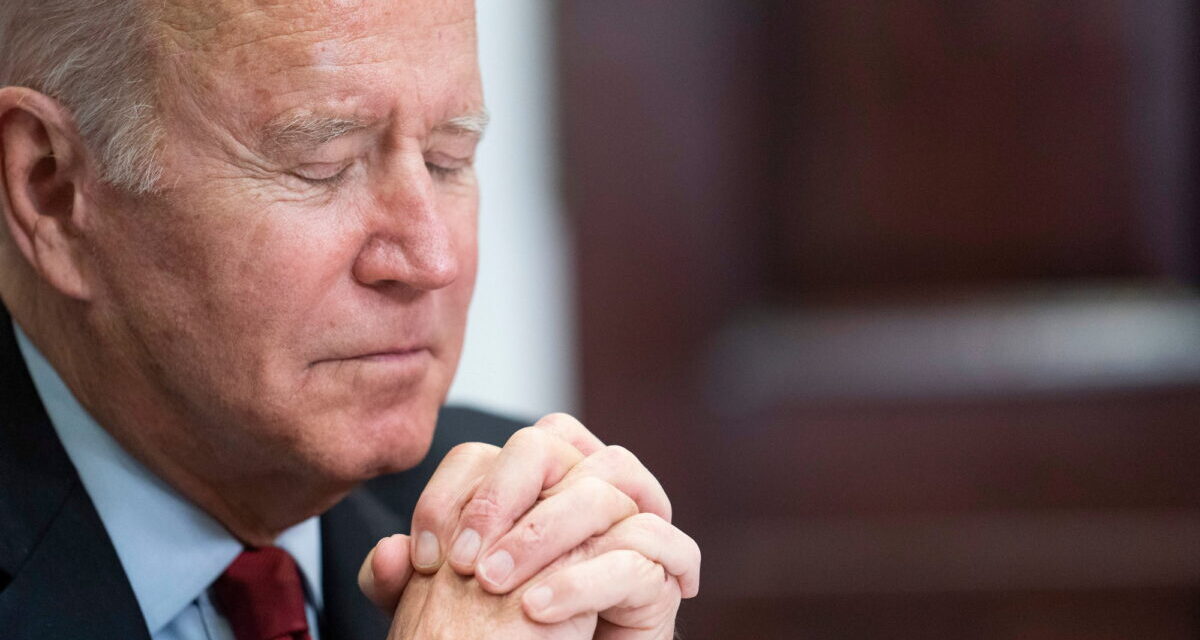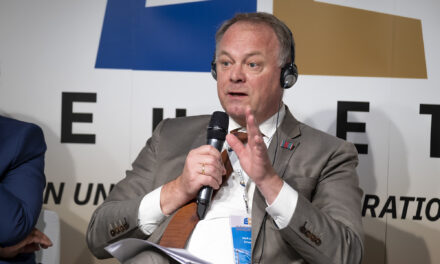A Republican proposal would strengthen the right to pray in American schools.
Parental and child rights to be enforced within the walls of schools have been on the agenda in the United States recently. Republican leaders successively passed legislation protecting the former rights (e.g. Ron DeSantis - Florida; Glenn Youngkin - Virginia), which primarily limited violent and extremist LGBTQ propaganda infiltrating schools.
Florida Republican Rep. Matt Gaetz recently introduced legislation that would allow students and staff to pray at school without fear of any negative consequences. "Achieving God does not stop at the school gate. Our country's education policy prohibits students and faculty from praying while endlessly promoting extremist LGBT and anti-white propaganda based on critical race theory," Gaetz said before introducing the bill.
Students' religious practice at school in American law
The First Amendment to the US Constitution contains two clauses relating to religion and public institutions.
The first is the "Establishment Clause," which prevents the government and public institutions from engaging in activities that support, promote, or otherwise favor one religion over another.
The second is the "Freedom of Religion Clause," which prohibits measures that prevent individuals from practicing their religious practices (not only in private, but also in public). Ignoring the latter may restrict students' practice of their religious beliefs.
In 1993, Congress passed the Religious Freedom Restoration Act, the express purpose of which was to state that schools can only interfere with a person's religious practice if they can demonstrate that they have a "compelling interest" and use the least restrictive means possible to protect that interest. . Another law directly related to religion and schools is the Equal Access Act, which ensures that students' religious activities have the same right to "access" school facilities as non-religious activities. It is illegal to deny equal access to religious gatherings and to discriminate against students who wish to participate in such gatherings.
Although not legally binding per se, the obligations of schools and the rights of students under these laws are somewhat clearly outlined in President Clinton's 1995 memorandum to the Secretary of Education and the Attorney General on the Exercise of Religious Expression in Public Schools . Under the heading Prayer Services and Worship Practices, the document states that "A gathering defined and protected by the Equal Access Act may include a prayer hour, Bible reading, or other worship practice."
Decisions of the Supreme Court of the United States on the question of the relationship between school and religion
Good News Club v. Milford Central School: Milford Central School allowed the premises of its institution to be used for social, civic, recreational and community welfare activities, but when a family wanted to use it for teaching Christian values (Bible lessons, scripture memorization), it refused that. In its judgment, the Supreme Court classified the school's procedure as unconstitutional discrimination.
Lamb's Chapel v. Center Moriches Union Free School Dist : A New York public school barred a religious group from using its facilities to show films that "teach family values from a Christian perspective." The Court also classified the case as unconstitutional discrimination.
Kennedy v. Bremerton School District (June 27, 2022): The most recent decision related to school prayer involved a football coach who was fired for giving thanks with his students during games (the students voluntarily joined the adult who initially prayed alone). The Supreme Court protected the coach's constitutional rights and ruled in his favor.
Public schools must therefore carefully balance when their students request accommodations based on their religious beliefs, they cannot support any specific religion or discriminate against different religions. However, they must also avoid acting in a way that prevents students from exercising their right to express their religion. The religious rights of students within the walls of public schools basically encompass the following areas:
The aforementioned right to use school facilities for religious groups and activities on the same basis as other school groups;
The right to express religious beliefs in school assignments without judging the religious content;
They have the right to pray "in a non-disruptive manner" when not participating in school education;
They have the right to talk with their peers and try to convince them about religious topics (the school can only intervene if such talk is harassing);
They have the right to display and wear religious messages / symbols / clothing to the extent that students are allowed to display similar secular messages;
They can be exempted from classes that would significantly burden their free exercise of religion.
International outlook
Norway
In 2022, the students of the Sagatun school in Balestrand were forbidden to pray in the school building during their free time. The local authorities ruled that the premises could not be used for religious purposes and believed that Christian gatherings could make other students feel excluded.
Despite the cold and rainy weather, the students continued the gatherings outside, which resulted in strong criticism of the municipality, which finally gave in to the pressure and allowed the students to pray together inside the school building again.
Italy
The issue of the school crucifix (LAUTSI AND OTHERS v. ITALY)
The European Court of Human Rights condemned Italy in the first instance, saying that crosses in school classrooms violate children's right to freedom of religion.
in the final judgment , the judicial panel finally decided that school crosses do not violate either Article 2 of the First Additional Protocol of the ECHR (right to education) or Article 9 of the Convention (freedom of conscience and religion).
France
The state's laicity function appears in the Public Education Act, which stipulates the requirement of neutrality of the worldview of educators, and the fact that religious education can only be provided outside of school hours. This includes the prohibition of wearing symbols that refer to religious beliefs.
In a ruling, the Council of State upheld the termination of a teacher who refused to part with her veil.
But wearing even the most discreet religious symbols is not allowed: there was also an example of a teacher wearing a small cross around her neck being disciplined.
Contradictions arise at many points between students' freedom of conscience and the secularism of education.
The issue of wearing religious symbols, such as the Muslim headscarf, received the most publicity, but problems also arise in connection with special eating habits, the obligation to attend classes on Saturdays, participation in certain classes, and instructors of the opposite sex.
In 1995, the State Council ruled that no student can be exempted from attending Saturday classes in general, however, absence can be granted on a case-by-case basis.
The French school system cannot adequately respond to cultural and religious diversity, it can only deal with the resulting demands and conflicts in an ad hoc manner.
Germany
The first two paragraphs of Article 4 of the Basic Law ensure freedom of conscience and religion, including the exercise of these fundamental rights at school.
The second paragraph of Article 7 also gives parents the right to decide whether their child should participate in religious education. However, the next paragraph of the article states that religious education is a regular subject in public schools. In other words, the Basic Law obliges the state to include religious education in the school curriculum.
Schools and their employees are subject to the so-called neutrality requirement, which means they are prohibited from promoting a particular religious belief. However, this does not apply to students, who can freely exercise their freedom within the walls of the school → e.g. Muslims may wear a headscarf.
Moreover, in 2021 - as an alternative to religious studies - the subject of Islamic religious knowledge was also introduced
On the other hand, in relation to the question of the cross, according to the previous decision of the German Federal Constitutional Court in Bavaria, an objection can be raised regarding the use of the cross as a Christian symbol in classrooms, and the principals must find a solution that respects the freedom of religion of all concerned.
Prayer as a constitutional right
Back to square one, in 2022, the U.S. Supreme Court ruled in favor of religious freedom and sided with a football coach, Joe Kennedy, who was fired after he refused to stop praying on the field, according to a press release from the Florida representative.
Coach Joe Kennedy was an assistant football coach at BHS in Bremerton, Washington, and a Marine Corps veteran who committed himself to God and gives thanks after every game for the accomplishments of his players and the opportunity to be a part of their lives through football. Coach Kennedy initially prayed quietly and alone, but after several games, students noticed Coach Kennedy's prayers and asked if they could join him.
The superintendent later sent the coach a letter stating that he had been placed on paid administrative leave and could not participate in any capacity with the BHS football program. The letter alleged that Coach Kennedy "engaged in impermissible overt, public and demonstrative religious behavior while still serving as an assistant coach."
A federal judge's decision in November 2022 ruled that coach Joe Kennedy would be able to return to the field until March 15 of this year and pray freely, without those unauthorized in his constitutional right.
Author: Dr. Zoltán Lomnici Jr
Source: The entire article is available at Alaptörvényblog.hu
Cover image: MTI/EPA/UPI pool/Sarah Silbiger












